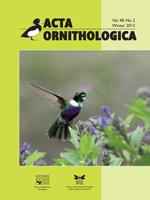Cooperative breeding is not common among birds, although its frequency is relatively high within the Corvidae family. We study the effect of group breeding on the reproductive biology of the Carrion Crow Corvus corone, a species that was usually described as non-cooperative. Our study population is located at the southern limit of the distribution of the species, which confers special characteristics to its breeding biology. Early breeders had a significantly larger clutch size and produced a higher number of fledglings. Replacement clutches were very rare and always unsuccessful, contrary to what happens in other European Carrion Crow populations. More than half of the breeding attempts (66.1%) in our study area showed cooperative breeding but it had only a significant effect on laying date — group-breeding females laid eggs significantly earlier than did pair-breeding females. We also explored brood parasitism by Great Spotted Cuckoos Clamator glandarius on the reproductive success of Carrion Crows. Brood parasitism reduced the number of both hatched nestlings and fledglings. However, group-breeding and pair-breeding nests had similar probabilities of being parasitized. Finally, we also examined the effect of some meteorological variables on the breeding performance of Carrion Crows. The average precipitation during the nestling period was positively related with number of fledglings raised.
How to translate text using browser tools
1 June 2013
Breeding Biology and Fledgling Survival in a Carrion Crow Corvus corone Population of Southern Spain: A Comparison of Group and Pair Breeder
María Roldán,
David Martín-Gálvez,
Juan Rodríguez,
Manuel Soler
ACCESS THE FULL ARTICLE

Acta Ornithologica
Vol. 48 • No. 2
June 2013
Vol. 48 • No. 2
June 2013
brood parasitism
Carrion Crow
Clamator glandarius
Corvus corone, group breeding
Great Spotted Cuckoo
helpers
weather conditions




